National Hydropower Day
National Hydropower Day
National Hydropower Day was established by the National Hydropower Association to recognize the impact of hydropower on U.S. energy infrastructure and grid reliability. In honor of this occasion, here’s some of Pacific Northwest National Laboratory’s work in hydropower over the past year.
Hydropower and the Grid
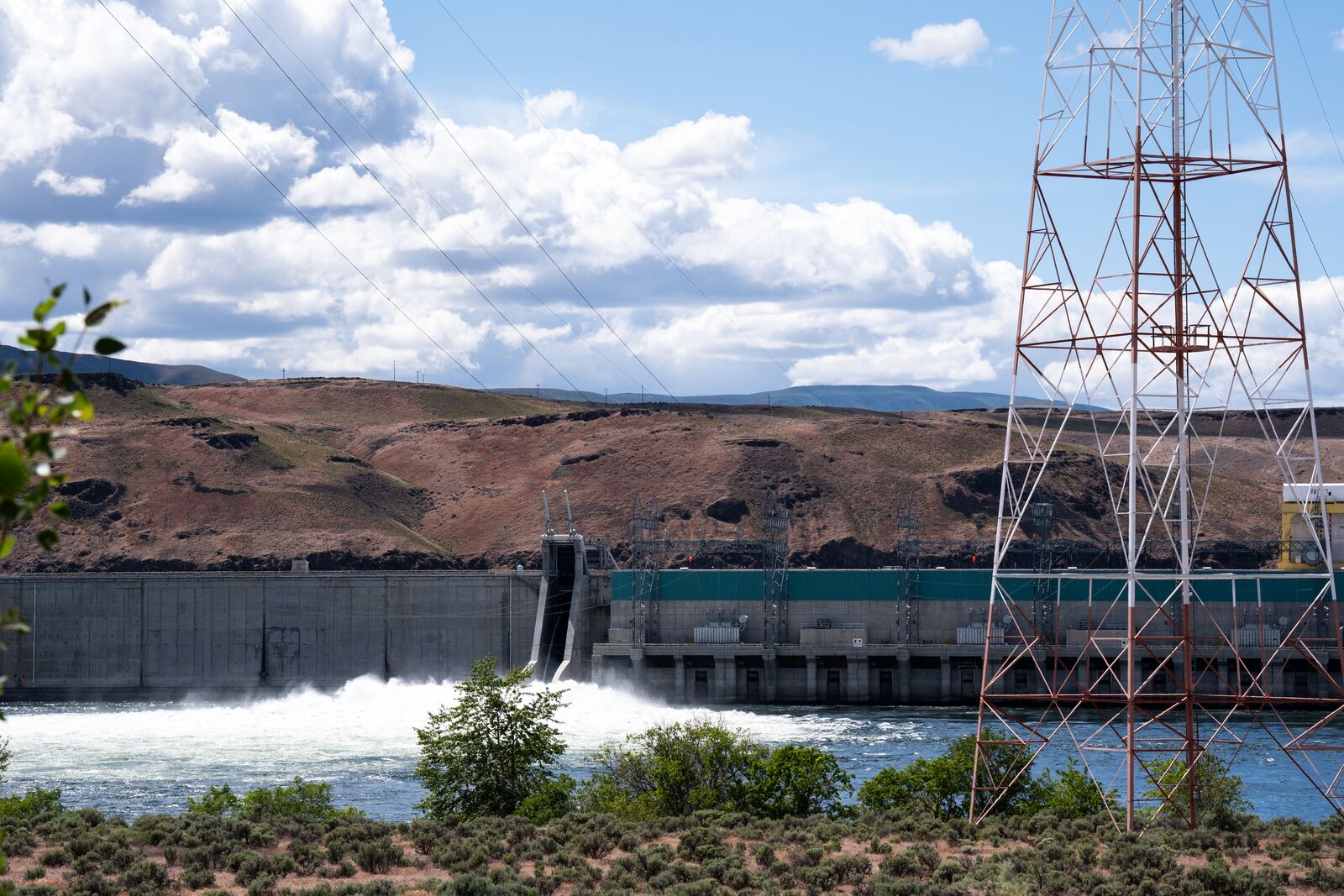
The HydroWIRES initiative, led by the Department of Energy’s Water Power Technologies Office, is studying the evolving role of hydropower as part of a modern grid to unlock its potential for supporting energy reliability. HydroWIRES has explored the role of hydropower in grid operations across different regions of the country, its contributions to grid reliability, and its role in long-duration energy storage.
Hydropower’s ability to quickly ramp up or down to meet fluctuating power demand is key to supporting grid reliability. But such quick start/stop operations can increase wear and tear on hydropower turbines—driving up maintenance costs and shortening turbine lifetime. One possible solution is pairing battery energy storage systems with hydropower to limit the number of turbine starts/stops; however, these hybrid systems can be expensive. Recently, HydroWIRES investigated ways to optimize hydro-battery hybrid systems to maximize revenue and extend turbine lifetime, reducing the total time for hybrid systems to see a return on investment.
As part of the HydroWIRES initiative, researchers are investigating how to balance the trade-offs between hydropower generation and environmental impacts. This research is vital for understanding the current and future impacts of hydropower generation and facilities while supporting critical energy generation. The research team will soon release the Flow Tradeoff Tool, a free and comprehensive software toolkit designed to connect flow decisions to energy production and ecological impacts, allowing users to assess how operational changes affect fish habitats and energy production and revenue. Tailored for hydropower operators, resource managers, policymakers, and industry users, this toolkit helps evaluate how different flow requirements influence electricity generation and grid reliability. The project team shared resources to promote the tool’s features and capabilities, including an overview webinar of the Flow Trade-Off Tool.
New Fish Passage Technologies to Support Hydropower
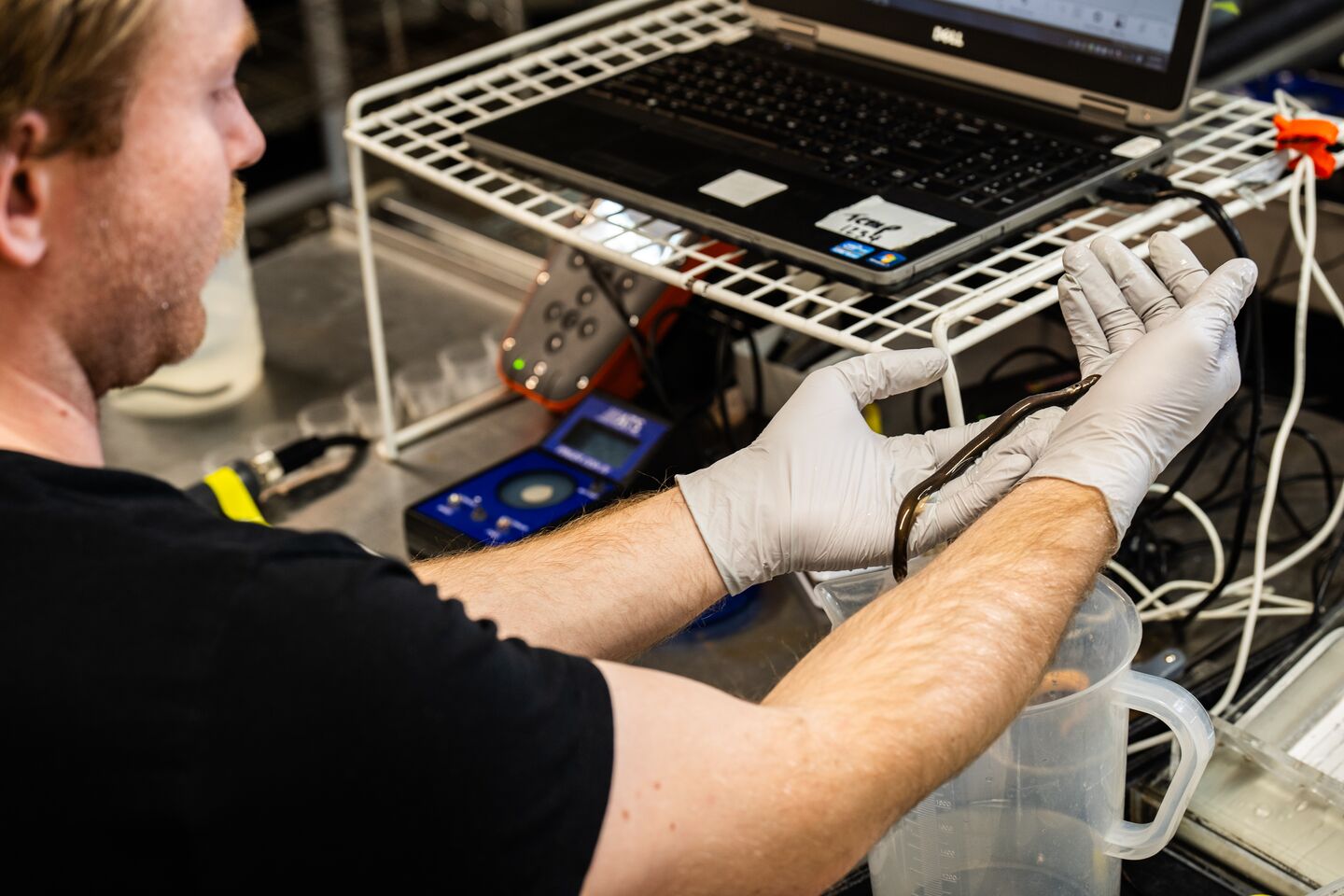
Pacific Northwest National Laboratory (PNNL) researchers have developed sensors, tags, and receivers that are improving fish passage to support rivers, communities, and power generation. Researchers at PNNL developed tiny tags specifically for the American shad, an economically and culturally important fish in the eastern United States. The shad is more sensitive to its surroundings, handling, and tagging than other species. Developing a specific tag and tagging procedure is important to better understand the shad’s in-water behavior. This year, the SHAD-TAGS won a 2025 R&D 100 Award in the category of IT/electrical innovations.
Additionally, researchers at PNNL developed a tagging technology used for juvenile eels and lampreys to better understand how these species migrate and travel through and around their habitats. This technology was commercially licensed in 2025 and will lead to wider user access and better outcomes for juvenile eels and lampreys.
PNNL’s researchers are leaders in innovative fish passage technologies and have received major recognition for their work in this subject area. Daniel Deng, a mechanical engineer and Lab Fellow at PNNL, was doubly recognized for his work in fish passage this year as he was appointed to be a Fellow of the American Society of Mechanical Engineers and awarded a Career Achievement Award from the Joint Committee on Fisheries Engineering and Science for his work in fish passage research and technology development.
Other new technologies are being tested as part of PNNL’s technical assistance efforts related to fish reintroduction. Fish reintroduction is the intentional establishment of a fish species in an area where it existed historically prior to hydropower development and other terrain changes to the species’ habitat. In Washington and California, researchers from PNNL are working with partners to inform fish passage improvements and habitat restoration to overcome obstructions to fish migration, with the goal of increasing fish population sizes and making populations more resilient. Some of the technologies assisting in these efforts are fish tags, water flow systems for fish egg incubation systems, and protective coatings on netting used to guide, catch, and release fish for tagging and relocation.
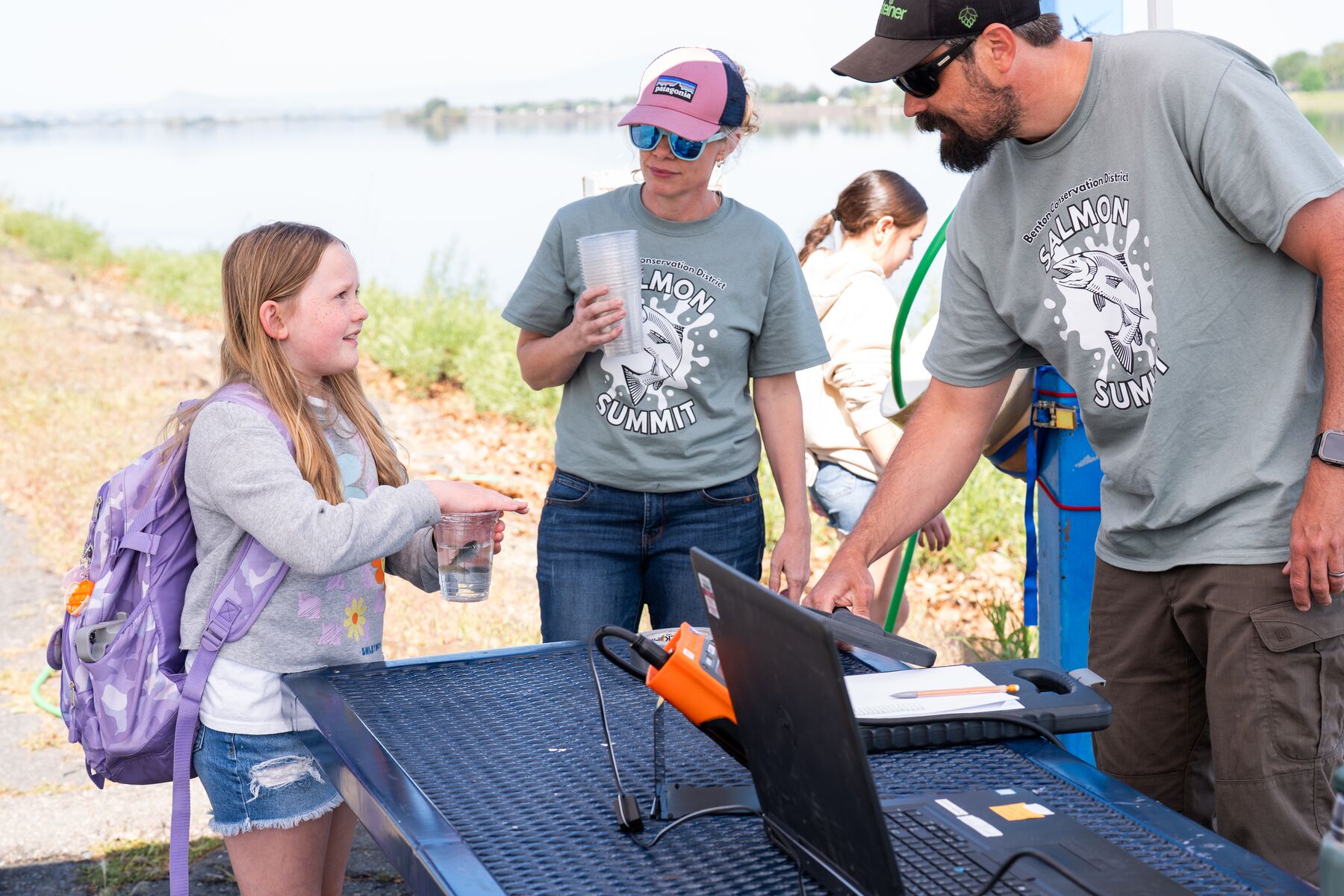
Workforce Development in Hydropower
While scientific advancements in hydropower are critical, so is inspiring the future hydropower workforce and making scientific information accessible to everyone.
Every year, fourth and fifth graders from across eastern Washington raise salmon from eggs to juveniles as part of the Salmon in the Classroom curriculum run by the Benton Conservation District, which culminates in the Salmon Summit event. During the Salmon Summit, students release their juvenile salmon into the Columbia River and researchers from PNNL demonstrate how they tag and release juvenile salmon for an audience of approximately 5,300 students, both in person and through a live stream of the event. PNNL STEM Ambassadors facilitate additional activities at the event to showcase other topics related to hydropower, fish passage, and salmon life cycle.
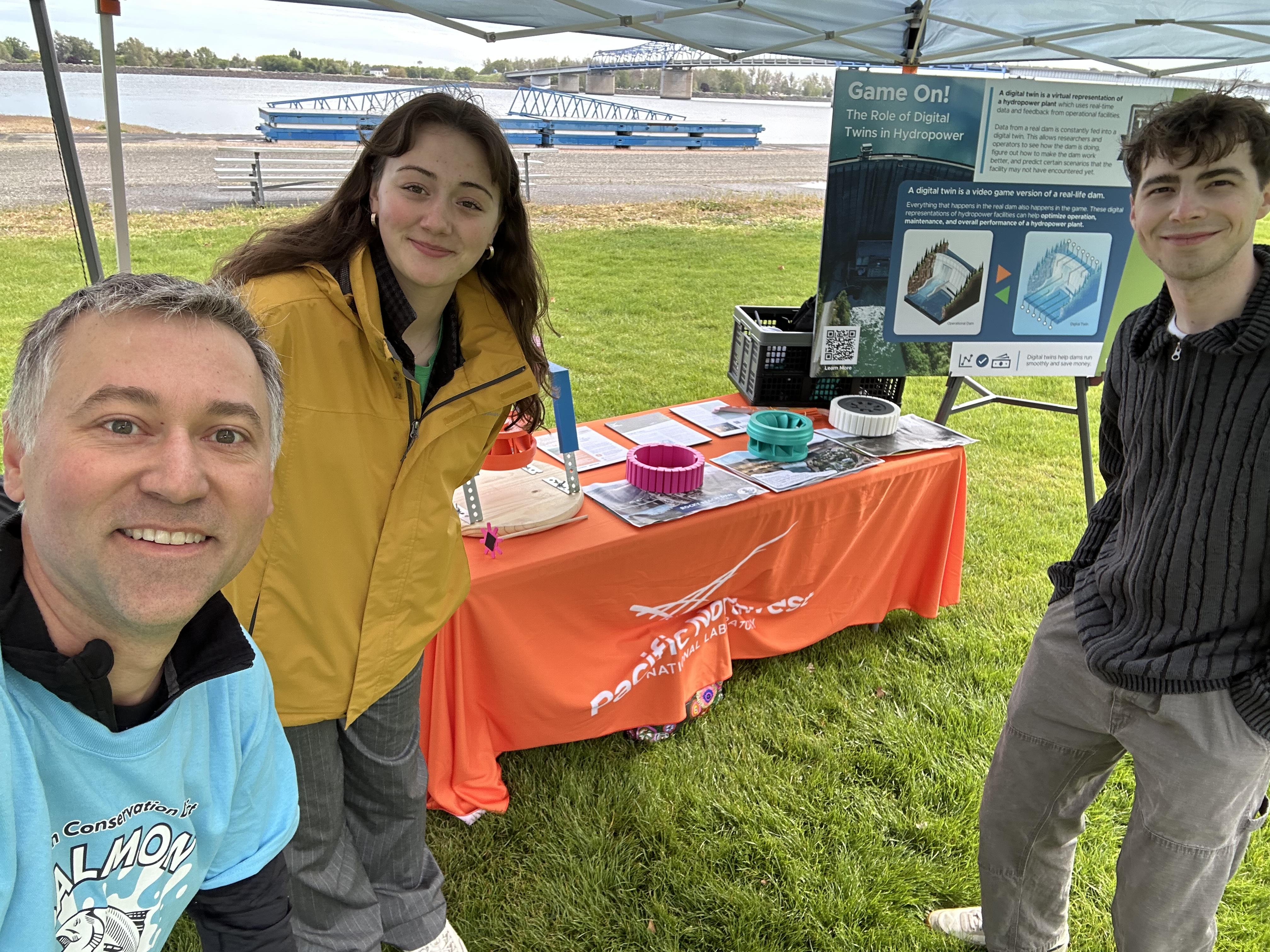
In 2024, the National Hydropower Association awarded the Outstanding Stewards of America’s Waters award in public education to Alison Colotelo, waterpower program lead at PNNL, and Kristy Pentico, outreach coordinator at Benton Conservation District, for their work on Salmon Summit. Outstanding Stewards of America’s Waters highlights initiatives across the hydropower industry that are advancing public education, recreation, environmental stewardship, and historical preservation.
PNNL supports a variety of educational and workforce development efforts to build the future hydropower workforce. The project team for PNNL’s work on Digital Twins for Hydropower mentored six students from the University of Oregon who developed an innovative 3D explorer and STEM-focused game to teach the principles of hydropower generation, which was showcased to the students at Salmon Summit. The hydropower program supported eight interns through PNNL’s Student Undergraduate Laboratory Internship program, including Jess Watley, who plugged into the irrigation modernization project team to work on science communication within that project.
Modernizing Hydropower Cybersecurity and Operations

The United States hydropower fleet requires smart modernization to reduce costs and enhance the overall reliability and value of the nation’s longest-serving renewable energy technology. Led by PNNL, the Digital Twins for Hydropower framework creates a virtual platform to accelerate technology development for the hydropower industry by providing virtual and real-time data and feedback to optimize hydropower operations. In 2024, the project team released new software updates so they can now use the dashboard to adjust factors that can potentially wear down a turbine’s efficiency, like unexpected electricity demand or extreme water level changes. The team is currently working with two hydropower dams in Washington State to use the digital twin solution to improve their operations and maintenance processes.
Researchers at PNNL are combining their knowledge of the hydropower system and expertise in cybersecurity to secure the operational technology of the nation’s hydropower fleet. Efforts to adapt aging systems to thwart today’s constantly evolving cyber threats include developing a suite of cybersecurity tools, an operational training model, and a monitoring system.
PNNL’s support in protecting hydropower plants also extends to an award-winning technology called SerialTap. This palm-sized device serves as a data collector which allows access to modern network cybersecurity tools used to monitor dispersed serial communication devices and legacy industrial control systems. SerialTap makes it possible to detect cyberattacks and network anomalies so that analysts and operators can respond more quickly and effectively.
Informing Hydropower Development
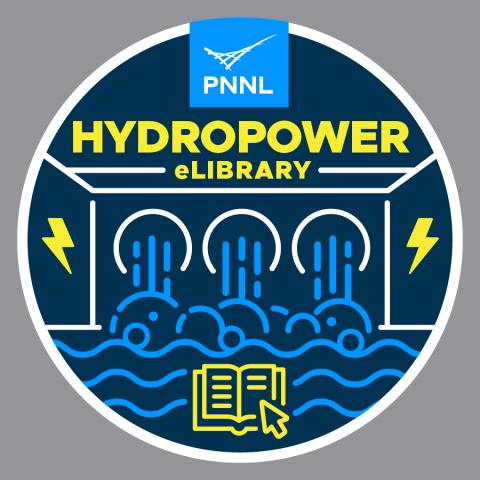
Hydropower development relies on past and current documentation of hydropower sites for tracking the permitting and permissions granted for maintaining these facilities and sites. Researchers at PNNL helped build the Hydropower eLibrary, which provides an easy way to search for Federal Energy Regulatory Commission (FERC) hydropower documents, licenses, projects, and dam information.
The eLibrary site offers a user-friendly platform to explore all hydropower documents from the FERC eLibrary database. In addition, the site features a comprehensive list of current FERC hydropower projects, complete with links to corresponding FERC licenses, amendments, and other key documents, as well as an interactive map of existing hydropower projects across the United States. This tool was developed for anyone who wants to quickly access hydropower information from the FERC eLibrary database via a simplified interface—hydropower owners and operators, consultants, and regulatory agencies to name a few.
Additionally, researchers at PNNL steward the Hydropower Vision Roadmap, which charts a path to the reimagined Hydropower Vision in 2050 by identifying specific goals and activities that are key to achieving the vision. At the 2025 Clean Currents conference, the Hydropower Vision team will be running the Innovation Power House Station as a hub for exploring, learning, and gaining insight on various hydropower topics, including those areas integrated in the roadmap.
Hydropower Materials Research
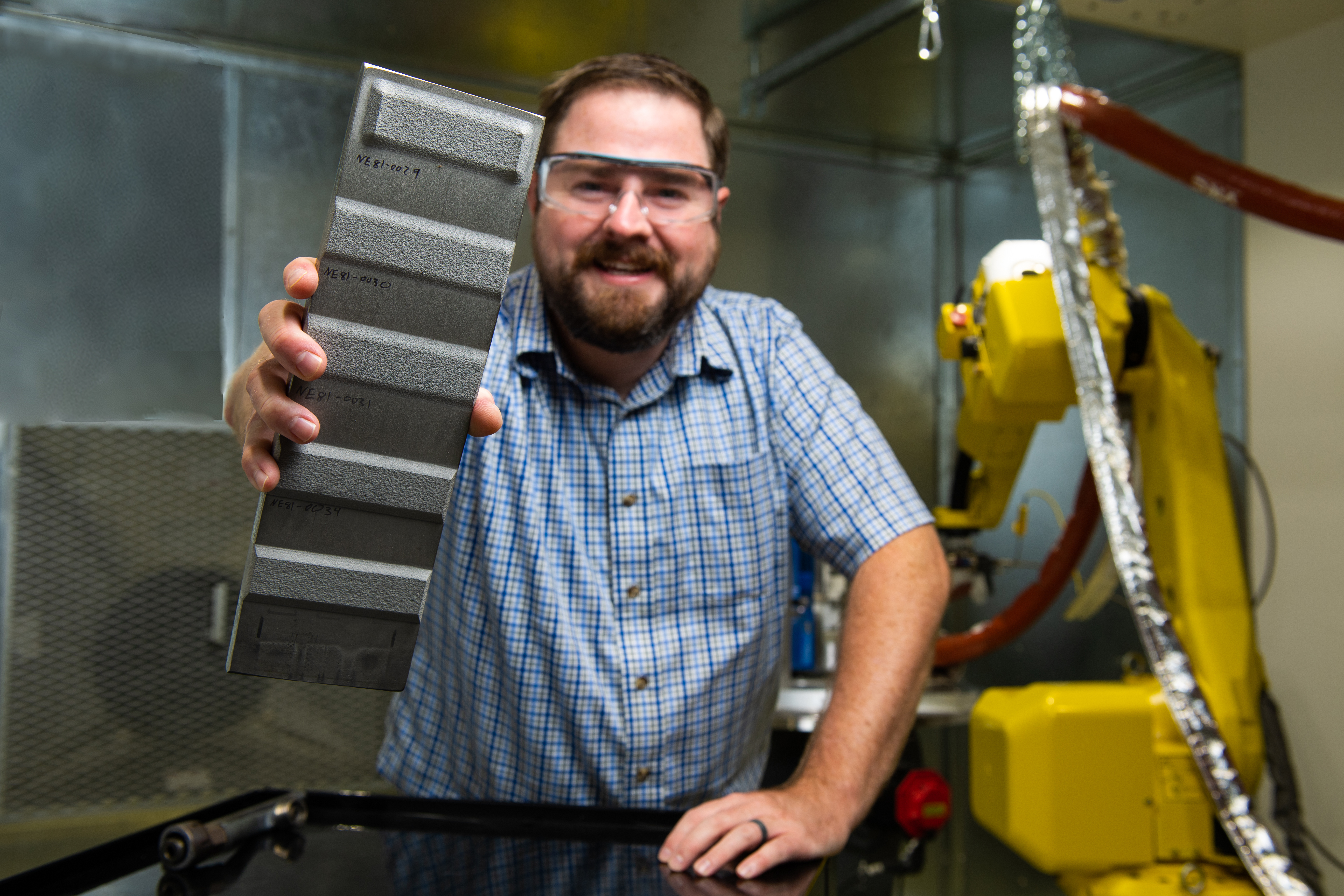
PNNL is involved in a variety of materials research regarding hydropower equipment and facilities. From developing specialized lubricants and coatings, to understanding the effect of wear and tear of hydropower equipment, researchers at PNNL have been developing and testing improved materials for making hydropower facilities and generation efficient and cost-effective. Some key areas of research and development in hydropower materials include:
- The self-lubricated bushings test stand, which tests how different combinations of materials perform under stress and over time.
- Corrosion and fatigue testing explores how environmental factors can affect the life of these materials over long periods of time and under critical conditions.
- Cold spray is a method of depositing powder particles onto a component at supersonic speed to form strong metallurgical bonds. This coating can help hydropower turbines last longer by reducing the effects of wear and tear from fast-moving water.
Supporting the Hydropower Testing Network, which connects hydropower technology developers with testing capability providers to help advance new technologies toward commercialization and support hydropower’s role in the national energy landscape.
PNNL’s Aquatic Research Laboratory
Did you know that PNNL has a 7,400-square-foot laboratory that serves as home to 10,000-20,000 fish at any given time? The facility enables research focused on the effects of hydropower development and operation. Water is pumped in from the nearby Columbia River and is then heated or cooled to help rear various species of fish. Many of the fish are tagged and released.